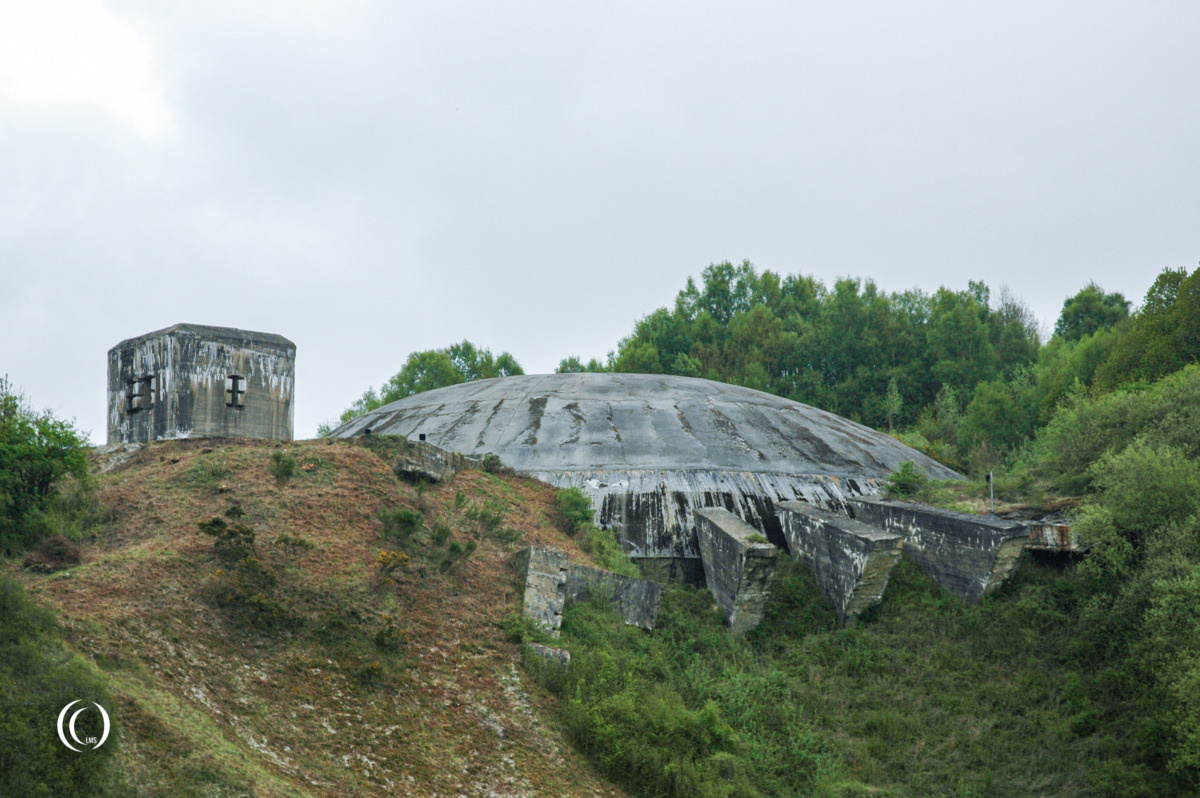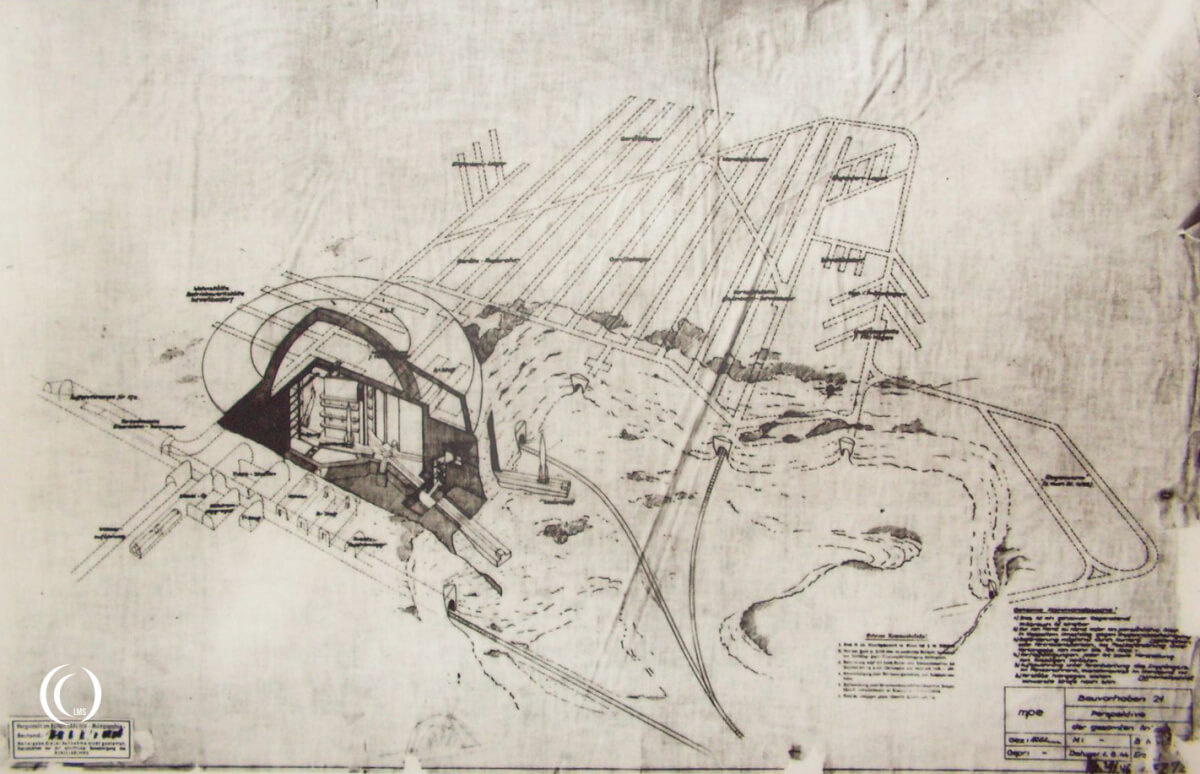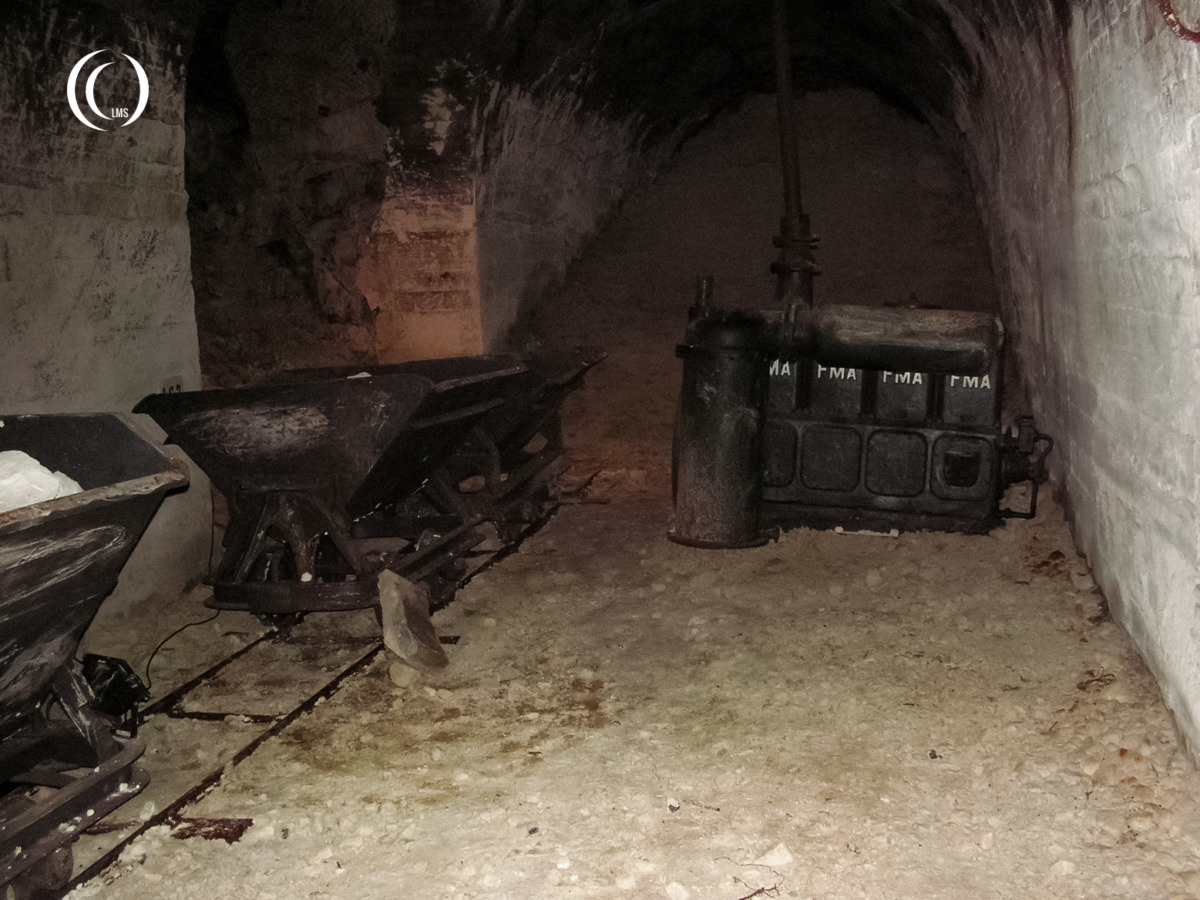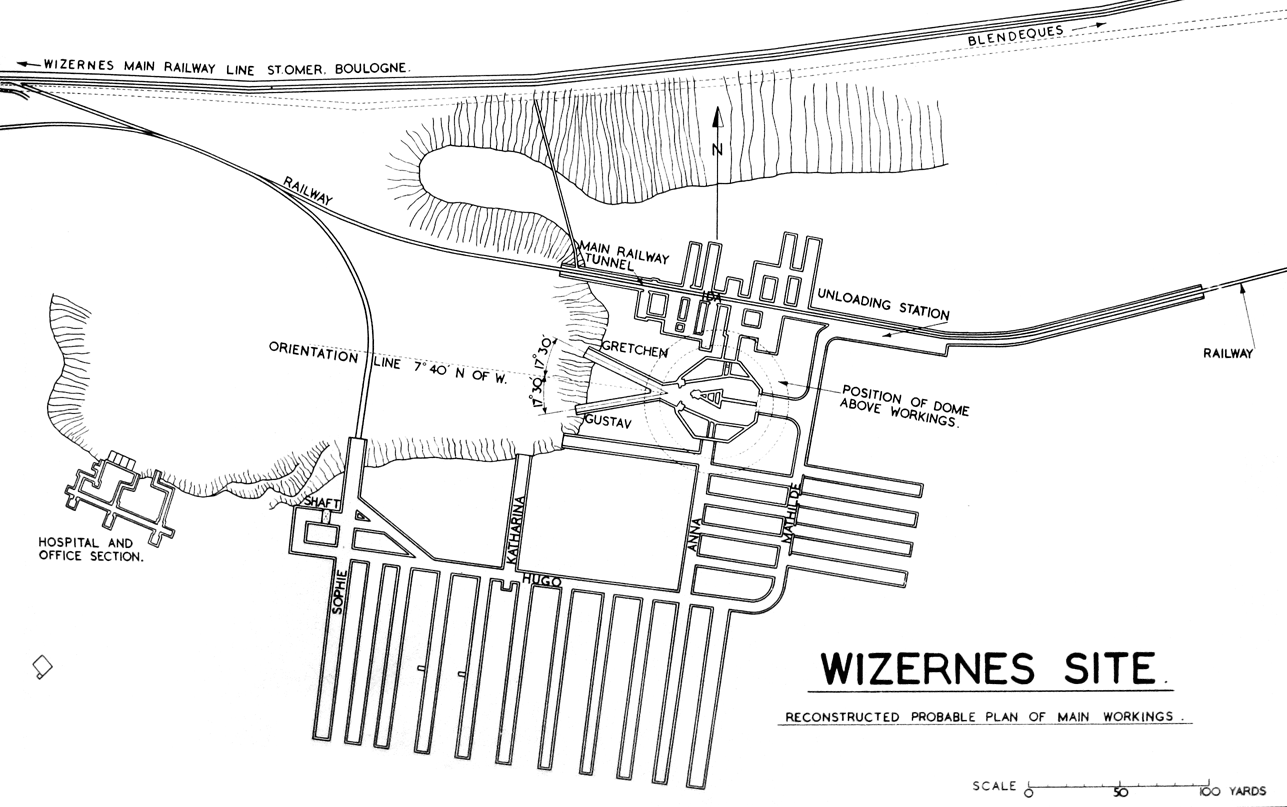
The last thing you’d expect to find here in this remote area between Helfaut and Wizernes, France is this massive structure. It almost feels like driving up to a U.F.O. when you see the big round shape appear. While getting closer to the structure we have difficulty estimating its size. The only thing to base a guess on is the small ventilation bunker standing next to the dome, but that turns out not to be that small at all.
This V-2 missile launch installation is one of the “Sonderbauten” which was planned to be built by Organisation Todt between 1943 and 1944 in France. Codenamed as “Bauvorhaben 21” it was a replacement for the Watten Bunker (now known as Blockhaus d’Éperlecques), which was destroyed before it could be put into action.
V-2 Missile Base
In March 1943, Hitler ordered the construction of an underground V-2 launch installation aimed at England in the Forest of Éperlecques near Watten, north of Saint-Omer, France. But the construction of the ambitious bunker installation was quickly spotted by Allied reconnaissance and before it was ever completed it was destroyed in a massive bombing raid on 27 August 1943.

After the successful Allied bombing of the Watten bunker, the German Army was forced to find an alternative location for a V-2 launch site nearby. Their focus shifted towards an old quarry between the villages of Helfaut and Wizernes, some 12 kilometers south of the Watten bunker, which had been designated as a V-2 missile storage depot. Tunnels were bored into the hillside to house the rockets and a railway connection made to the main track for transport.
During a meeting with Hitler and Albert Speer on 30 September 1943, the chief engineer of the Todt Organisation Franz Xaver Dorsch suggested to transforming the V-2 depot at Helfaut-Wizernes into an underground missile complex. A network of 7 kilometers of tunnels into the hillside of the quarry would provide enough room to facilitate the rocket’s assembly, storage and launch, while a 5 meters thick, 71 meters in diameter concrete dome had to protect it from Allied bombings.
Construction
After the project was approved by Hitler the construction of “Bauvorhaben 21”, starting with the dome, began in November 1943. The need to conceal the construction and the constant air raids slowed the building process significantly. When in April Hitler demanded to see the project finished, the number of workers was upgraded from 1100 to around 1400 in June. A large part of the work was done by German specialists, together with French conscripted workers and Soviet forced laborers.

The picture underneath shows the complete construction plan (Bauvorhaben 21) of the tunnel system.



Railway tunnel “Ida”
Today’s entrance into the bunker facility is the planned railway tunnel “Ida”. This tunnel would run straight through the complex and connect to the main railway line again on the other side, so trains wouldn’t need to reverse. Here V-2 parts, supplies and fuel could be safely unloaded off the train and stored in one of the many side tunnels of the complex.



Operation Crossbow
Allied reconnaissance had already picked up on the site in August of 1943. Later in November the construction of the dome and excavations were spotted on RAF reconnaissance pictures and near the end of the same year Allied intelligence also received warning of a Belgian source. Despite this, it lasted until March 1944 to add the site to the target list of Operation Crossbow. This Allied operation was aimed at the destruction of all V-weapons sites and installations.
Starting from 11 March 1944 a total of sixteen bombing missions were flown against the Helfaut-Wizernes missile complex. Most of these missions caused minor damage to the structure, but on July 17th a combined mission with Ground penetrating Tallboy bombs caused severe damage. One of the bombs fell right next to the dome in the quarry, which collapsed the cliff face and buried the entrances to the V-2 launch tunnels Gustav and Gretchen and the railway tunnel next to it, leaving railway tunnel Ida as the only entrance. While the dome itself was unharmed, the buttresses to support the planned two meters thick concrete Zerschellerplatte or protective collar around it had slid away from the dome by the resulting landslide. Further landslides made resuming construction impossible.

On 18 July 1944, Hitler finally dropped his plans for the construction of V-2 bunker facilities and reluctantly ordered the downgrading of the V-2 complex into a liquid oxygen (LOX) production facility, even though the liberation of Northern France by the Allies was in full swing. In early September 1944 the site was abandoned just days before the Allied forces took over the area.
V-2 Museum
Starting from 1986 there were plans to develop the site into a World War Two museum and in 1997 the V-2 museum finally opened its doors to the public.
Exhibition
For those who like modern exhibitions with lots of media like video, lights, etc, this part is really nice. But if you expect to find more about the history of this structure itself you will be pretty disappointed. The exhibit is mainly about the Second World War in France in general and near the end more specifically about the development of the V-2 rocket and later even the space age. There are some nice scaled models of other Organisation Todt projects (Sonderbauten), but the museum doesn’t seem to have the main focus on this specific subject or the structure itself.
Although we found this somewhat disappointing, the big concrete dome hanging visibly over our heads took some of that away. This choice was probably made because the building was never actually used by the Germans and left abandoned in 1944 after the Invasion of Normandy.


Visit
Starting at the parking lot you walk up to a modern visitor centre where you have to pay admission and get a headphone to guide you in four languages. From the ceiling hangs the manned V1 (the man is a doll) or Fieseler Fi 104 Re4. Then you leave the visitor centre and you can walk up to the entrance of La Coupole. At least 7 kilometres of tunnel system was dug here mainly by forced labourers. There is an impressive exhibition about this, illustrated by several multimedia installations. Only part of this large complex of tunnels is open to the public. You can take the elevator to the dome above.
You can take a walk around the dome. It starts from the parking lot near the entrance on the right. The path climbs up the hill towards the dome. Sometimes you get real close to the concrete, but unfortunately because of the thick foilage between the path and the dome, there isn’t a lot to see. We found the ‘small’ ventilation bunker which we could photograph from the back and got a view on the top of the dome.
More information about opening hours and entrance fee can be found on the museum website.

Yes I went to La Couple – I found it interesting. but a little “formulaic” for me – it filled up an afternoon. As you say the site was superbly camouflaged nestling against an escarpment. Wonder how many poor wretches worked on it>
Really interesting. You can feel the presence of those who worked and died here over 70 years ago